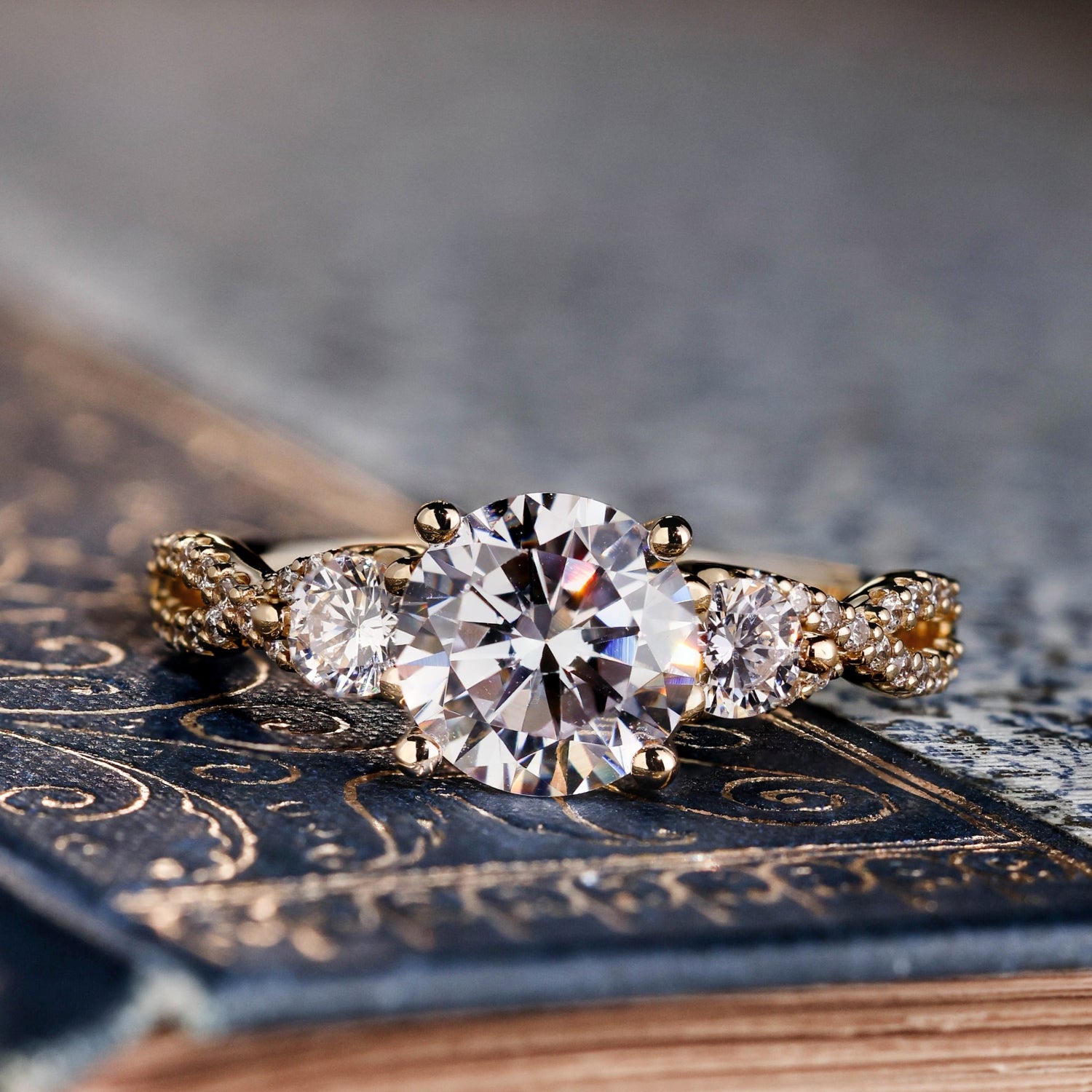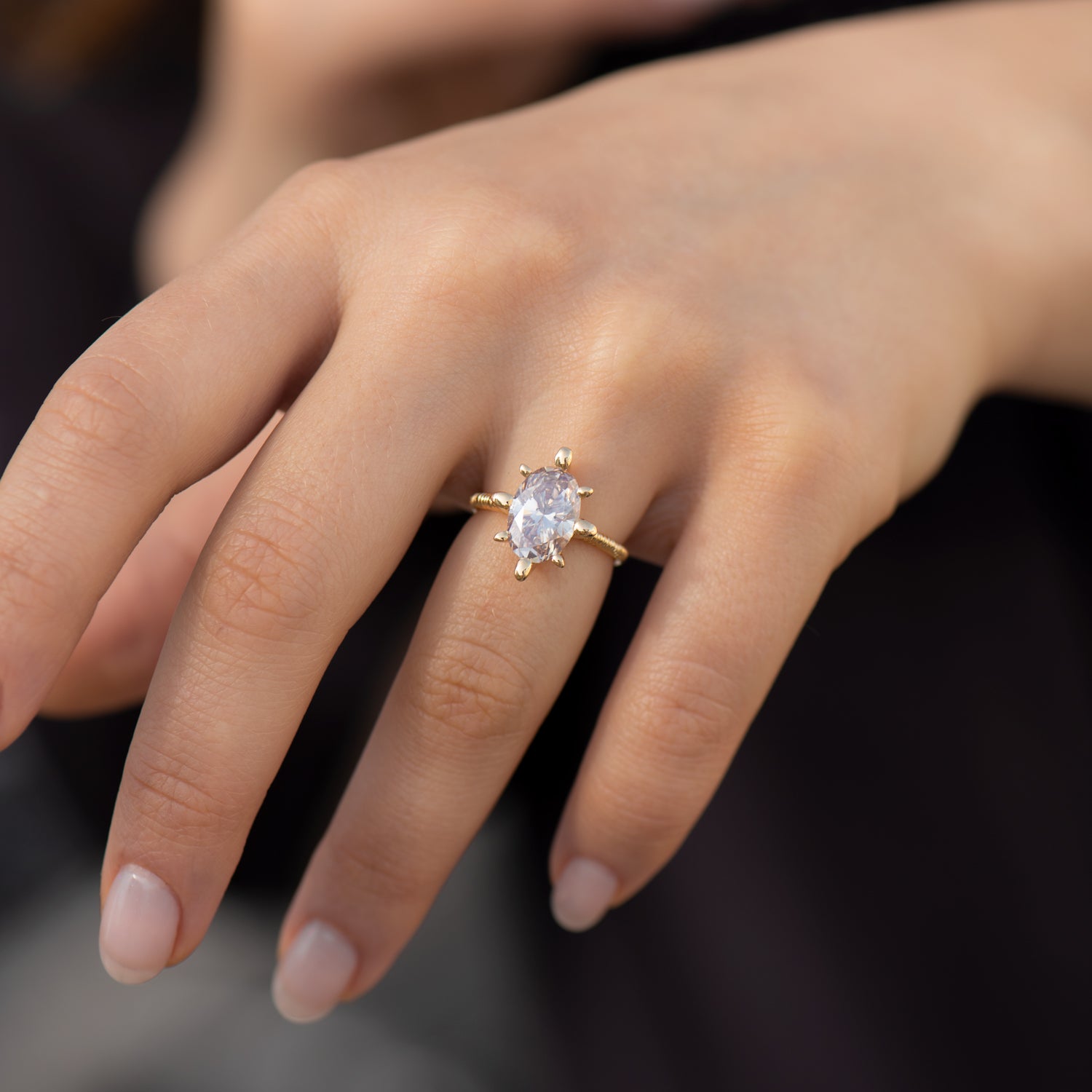Why Lab Grown Diamond Engagement Rings Are the Perfect Selection for Eco-Conscious Couples
Lab-grown Diamond interaction rings provide a compelling choice for couples that prioritize sustainability. These diamonds provide a striking option to traditional extracted stones, substantially lowering environmental harm. They are created making use of sophisticated strategies that assure both high quality and radiance. As awareness of ethical sourcing expands, lots of pairs are reevaluating their choices. What implications does this change have for the future of the Diamond industry?

The Ecological Effect of Typical Diamond Mining
Although Diamond mining has actually long been celebrated for its attraction and prestige, the ecological repercussions of standard mining practices are progressively concerning. The extraction of rubies typically involves substantial land disturbance, leading to logging and environment loss for numerous varieties. Additionally, the procedure takes in substantial amounts of water, which can deplete neighborhood sources and negatively impact bordering areas. Toxic chemicals utilized in mining procedures can contaminate nearby water resources, better jeopardizing both human populaces and wildlife.
Moreover, the carbon impact connected with delivering mined rubies adds to the general environmental toll. The heavy equipment and tools needed for mining procedures contribute considerably to greenhouse gas discharges. As recognition of these concerns expands, many consumers are beginning to doubt the sustainability of conventional Diamond sourcing. This shift in point of view highlights the urgent demand for more eco-friendly options, such as lab-grown diamonds, which guarantee to minimize the ecological impact while keeping the appeal and value of Diamond fashion jewelry.
The Refine of Producing Lab-Grown Diamonds
Lab-grown diamonds are developed with two primary methods: High Pressure Heat (HPHT) and Chemical Vapor Deposition (CVD) The HPHT procedure mimics the natural conditions under which rubies develop in the Earth's mantle. It entails subjecting carbon to extreme pressure and temperature level, causing the crystallization of carbon atoms right into Diamond frameworks. On the other hand, the CVD method allows for the development of rubies in a regulated setting. This strategy uses a gas mix consisting of carbon, which is stimulated to develop plasma, enabling carbon atoms to deposit onto a substrate and grow layer by layer right into Diamond crystals.
Both methods create rubies that are chemically and literally similar to all-natural rubies - lab grown diamond engagement rings. The choice of method frequently depends on the desired attributes and size of the last gem. This ingenious strategy to Diamond development not only uses a lasting option but likewise enables higher transparency in the sourcing of products
Quality and Radiance of Lab-Grown Diamonds
While numerous might presume that lab-grown rubies vary in quality from their natural equivalents, they actually show equivalent brilliance and aesthetic allure. Lab-grown rubies are produced using sophisticated innovation that reproduces the natural conditions under which rubies create, leading to rocks that have identical physical and chemical residential properties. These diamonds achieve the same remarkable clearness and shade grading as mined diamonds, making them tantamount to the nude eye.
In regards to luster, lab-grown rubies often display exceptional light efficiency because of their precision-cut elements. The strenuous quality assurance throughout manufacturing guarantees that these rubies fulfill high standards, enhancing their aesthetic appeal. Furthermore, they are offered in a range of sizes and shapes, enabling couples to discover the best ring to match their personal design. Inevitably, lab-grown rubies offer a charming combination of elegance and quality, making them an appealing selection for interaction rings.
Ethical Considerations in the Diamond Industry
As consumers come to be significantly mindful of the honest implications surrounding Diamond sourcing, the conversation around the Diamond market has actually changed markedly. Problems regarding conflict rubies, typically described as "blood diamonds," click to read have actually triggered calls for better transparency and responsibility in mining methods. These rubies are mined in battle zone and sold to fund armed dispute, increasing serious ethical inquiries for consumers. Furthermore, the ecological influence of traditional Diamond mining has actually come under scrutiny, with concerns such as environment devastation and water contamination frequently highlighted.
In feedback, lots of have actually transformed to lab-grown diamonds as a more moral alternative. These stones are produced in controlled settings, removing the threats associated with mining. Subsequently, lab-grown rubies attract customers seeking to make liable options that align with their worths. The growing need for honest practices proceeds to improve the Diamond market, promoting lasting and gentle sourcing methods.
Cost-Effectiveness of Lab-Grown Diamonds
Lab-grown rubies provide an engaging option for customers looking for cost-efficient interaction rings - lab grown diamond engagement rings. Valued considerably lower than their all-natural counterparts, they provide excellent value for cash without sacrificing top quality or look. This affordability makes lab-grown rubies an attractive option for budget-conscious couples
Reduced Rate Point
Many couples are uncovering that choosing lab-grown Diamond involvement rings can substantially reduce their overall prices without sacrificing high quality or beauty. These rubies commonly set you back 30% to 50% much less than their mined equivalents, making them an appealing option for budget-conscious customers. The cost benefit emerges from reduced production costs and an extra efficient supply chain, which gets rid of the expenditures associated with mining. Consequently, pairs can invest go to the website in larger stones or even more detailed settings, enhancing the total aesthetic of their rings. This cost not only enables for a more personalized choice but likewise straightens with the values of eco-conscious couples who focus on sustainability while continuing to be monetarily savvy. Lab-grown diamonds provide a perfect mix of sophistication and economic climate.
Value for Cash
The cost-effectiveness of lab-grown rubies expands past their initial cost, providing outstanding worth for money. Unlike all-natural rubies, lab-grown options can be approximately 40% much less pricey while maintaining the exact same physical and chemical buildings. This cost enables pairs to purchase larger or higher-quality rocks without exceeding their budget plans. Furthermore, the resale value of lab-grown diamonds is progressively improving, making them a much more feasible option for future economic considerations. Additionally, lab-grown rubies commonly come with reduced ecological and honest costs, offering couples with satisfaction. By selecting lab-grown diamonds, eco-conscious pairs not just conserve cash yet also contribute to lasting methods, enhancing their overall worth proposition in the precious jewelry market.

Modification Options for Lab-Grown Involvement Rings
Just how can pairs guarantee their interaction ring shows their special love tale? Modification options for lab-grown Diamond engagement rings give a suitable remedy. Couples can pick from different Diamond shapes, consisting of round, princess, or oval, permitting them to choose a style that reverberates with their personal aesthetic.
In addition, they can pick the setting-- be it jewelry, halo, or vintage-inspired-- guaranteeing the ring matches the Diamond's luster. Metal selections, such as white gold, yellow gold, or increased gold, additionally enhance customization, satisfying private tastes.
Couples can incorporate meaningful engravings, adding an emotional touch that represents their bond. With these extensive modification options, lab-grown Diamond involvement rings not only symbolize a pair's love but additionally reflect their values, making them an excellent choice for eco-conscious partnerships. Inevitably, these rings come to be a true representation of their special trip together.
Often Asked Inquiries
How Do Lab-Grown Diamonds Contrast to All-natural Diamonds in Value?
Lab-grown rubies generally set you back 20-40% less than natural rubies, offering comparable high quality and look. Their lower price point makes them an enticing alternative, specifically for budget-conscious consumers seeking honest and lasting options in precious jewelry.

Are Lab-Grown Diamonds Much More Durable Than Natural Diamonds?
Lab-grown diamonds have the very same physical and chemical homes as natural rubies, consisting of durability. Both kinds rack up an ideal 10 on the Mohs scale, making sure that lab-grown diamonds are equally resistant to damaging and damage.
Can Lab-Grown Diamonds Be Resold Easily?
Lab-grown rubies can be resold, but their market need varies compared to natural diamonds. While some buyers value their honest beginnings, others might like all-natural alternatives, possibly affecting resale worth and click resources convenience of transaction.
What Are the Care Recommendations for Lab-Grown Diamonds?
Lab-grown diamonds need regular treatment to keep their brilliance. Cleansing with moderate soap and cozy water, using a soft brush, and staying clear of extreme chemicals will aid preserve their sparkle and honesty for years ahead.
Exist Any Certifications for Lab-Grown Diamonds?
Lab-grown diamonds can be accredited by respectable companies such as the Gemological Institute of America (GIA) and the International Gemological Institute (IGI) These certifications assure adherence, credibility, and high quality to sector criteria for lab-created gems.
Both techniques create rubies that are chemically and literally similar to natural diamonds. Lab-grown diamonds are created making use of sophisticated technology that reproduces the natural problems under which diamonds develop, resulting in stones that possess identical physical and chemical buildings. Lab-grown rubies usually cost 20-40% much less than natural rubies, supplying comparable high quality and appearance. Lab-grown rubies possess the very same physical and chemical homes as natural rubies, consisting of longevity. Lab-grown rubies can be re-selled, however their market need varies compared to natural rubies.